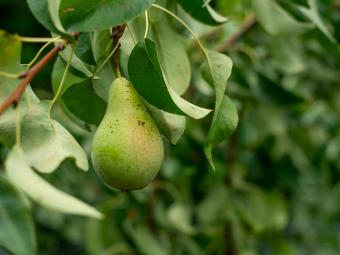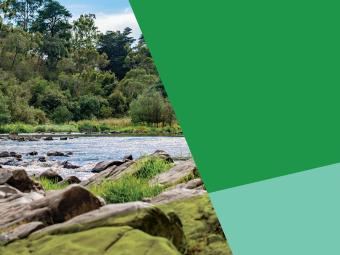Local conservationist and Templestowe Lower resident Richard Thomson was one of seven Manningham residents to be honoured in this year's Queen's Birthday Honours List, receiving a Medal of the Order of Australia for his service to the conservation of Australian native orchids.
Richard has worked tirelessly for many years to conserve local orchid species in Manningham, including as part of his 21 year service to the Friends of Warrandyte State Park. We spoke to him about his deep knowledge and love for orchids as a genus and found out about the other conservation work he has been doing in his long years of community service.
What got you interested in native orchids that lead to you volunteering to help preserve them?
I loved the bush both for pleasure and bushwalking. The sounds, the colour, first light and last light, the birds, animals, the sounds of the night, looking up at the stars – magical. I would see the orchids’ flowers and they were obviously different to most other flowers, especially in shape. I became fascinated by them and their place in the environment; they are so dependent on other members of that environment.
What else makes orchids special?
They are a key indicator for the health of an eco-system. The special fungus that each species uses needs to be in the soil and the special insect that pollinates each species needs to be present. And the pollinator needs food, from other flowers and nectar. And then there is their evolution that give their flowers such special shapes.
Why are orchids threatened?
We are heavy users of land, whether for houses, farms, mining etc. Thus, much of the land they used to grow on we use. My little house block would have had a half a dozen orchid species growing on it according to old records.
What are some of the ways conservation volunteers like yourself are working to preserve them?
Local Friends groups such as Friends of Warrandyte State Park provide a great way to contribute towards helping your local species. Environmental groups such as Trust for Nature and Bush Heritage are newer but key groups. Volunteers can contribute through all these groups either by giving time or donations. Volunteers help by growing plants, removing weeds, planting plants and in some cases building fenced areas to project rare species. These fences provide a safe haven for these species to grow and breed and spread their seeds into the wider reserve.
What sort of work do you do with Friends of Warrandyte State Park?
One of the important things about the Friends of Warrandyte Park is the enjoyment of one another. We sow seed, take cuttings, build nest boxes, and weed areas of bush and plant out local plants in council and Parks Victoria reserves. We also learn more about our plants and their inhabitants. We add a lot of quality to our own lives.
Can anyone get involved?
Yes, we welcome anyone who is interested to drop into the indigenous plant nursery that we run in the Pound Bend area of Warrandyte State Park, once we are open again, to see what we do and who we are. We are there each Thursday morning and some Saturday mornings. It’s been 21 years involvement for me and I absolutely look forward to the mornings. University and school holidays are also special, when younger folk are able to join in.
What can the average person do to help preserve native orchids and the areas where they grow?
Join a group such as a Friends group or the Australasian Native Orchid Society. The most common activity are weeding around the orchids and searching for new populations – with skilled guidance –and growing orchids both for pleasure and for enhancing wild populations that are low in numbers. At Friends of Warrandyte Park we grow some native orchids, sell some to the public and help plant some into bushland areas.
What’s your favourite orchid?
This is like asking who is your favourite child. Thus I have to answer that it’s the one flowering at the moment. Currently the delicate little helmet orchids (Corybas) with their centimetre wide, shell-shaped flower sitting on heart-shaped leaves found just above some of the damper gullies and Blue Tongue Bend area on the Yarra. My orchid challenge at the moment is growing the Spider orchids, or Caladenia. These Caladenia are all rare and threatened and are among the more challenging of plants to grow. So when I succeed and they flower that will be my favourite flower.
And finally, what was it like to receive the Order of Australia Medal this year?
I feel honoured, even more so because my friends made the effort to put the material in to nominate me. One of the benefits of the award has been getting back in touch with people I’ve known throughout my life and reflecting on the good moments that we’ve shared.
You sort of feel a little bit guilty that you got the award, but you’re pleased that you’ve got it. You’re doing this stuff because you enjoy it and because you have a commitment to it, rather than thinking about the end of the road. My favourite part about being involved with orchids is the wonderful people who are also involved. I’ve had many wonderful years enjoying their company and their knowledge.
View Richard Thomson’s Order of Australia award citation here.


